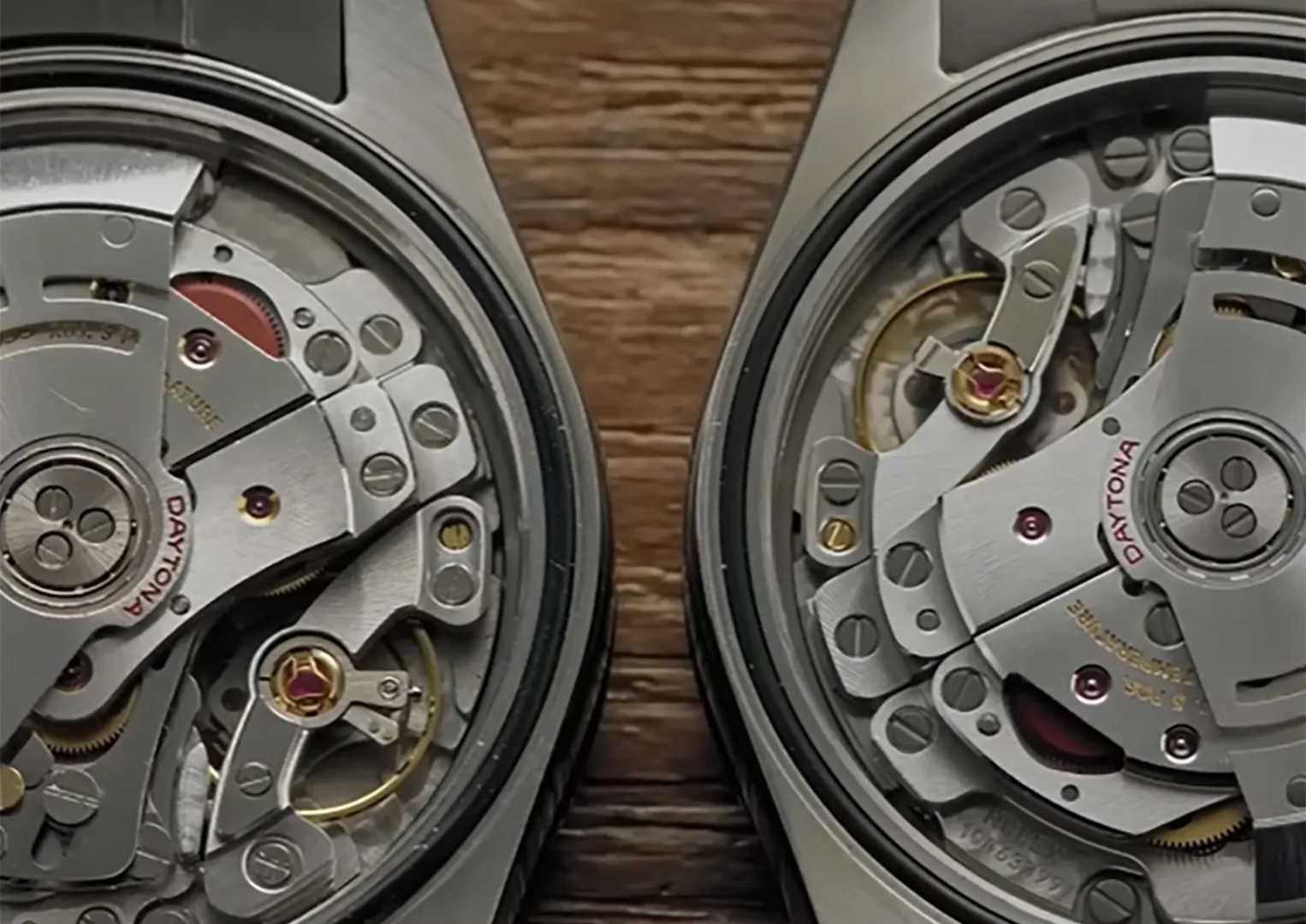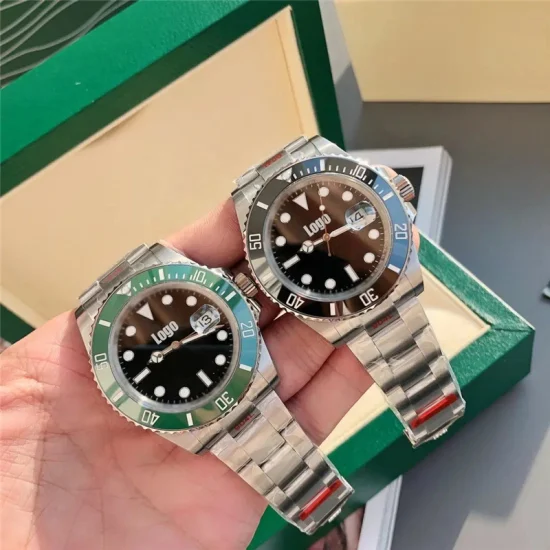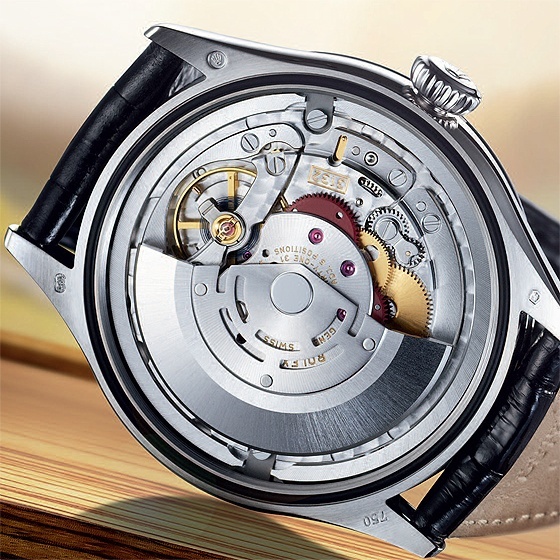Do replica watches have automatic movement?
Do replica watches have automatic movement?
In the timeless world of horology, the debate between original luxury watches and their replicas has become increasingly prominent. One fascinating aspect that draws the attention of both watch enthusiasts and casual consumers alike is the functionality of these watches, particularly their movement systems. Automatic movements are widely recognized for their craftsmanship and intricate mechanics. You might wonder, do replica watches incorporate such automatic movements, or are they merely imitations from all angles? This question opens a deeper exploration of how these movements work, their implications in the replica watch market, and the factors influencing their adoption. In this article, we will delve into the realm of automatic movements in replica watches, providing insights and comparisons that can aid your understanding and shopping experience.
Understanding automatic movement in watches
Automatic movement, also known as self-winding, is a marvel of engineering that allows a watch to wind itself while being worn. The defining mechanism is a rotor that spins with the motion of the wearer’s wrist, converting kinetic energy into stored energy within the mainspring. This self-sustaining process eliminates the need for battery replacements, positioning automatic watches as appealing options for aficionados seeking the timeless charm of mechanical timekeeping.

Key features of automatic movements:
- Rotor Mechanism: The rotor is a semi-circular weight that swings as the wrist moves. This movement winds the mainspring, enacting the necessary power to keep the watch running.
- Energy Storage: Automatic watches typically have a power reserve ranging from 38 to 80 hours, meaning they can continue to operate without movement for that duration.
- Watch Lifespan: With proper care and maintenance, automatic watches can last generations, often considered heirlooms.
- Complexity in Design: The intricacies involved in the engineering of automatic movements often lead to higher manufacturing costs and potentially, higher retail prices.
Common components in automatic movements include:
| Component | Function |
|---|---|
| Rotor | Converts kinetic energy from wrist motion |
| Mainspring | Stores energy to power the watch |
| Gear Train | Transfers energy from mainspring to the escapement |
| Escapement | Regulates the release of energy for accurate timekeeping |
| Balance Wheel | Oscillates to keep time, similar to a pendulum |
In essence, understanding the workings of automatic movements helps appreciate the artistry involved in high-quality watchmaking. This understanding is critical when exploring replica watches, as buyers need to discern the quality and craftsmanship behind the automatic features offered in these alternatives.
Characteristics of replica watches
Replica watches come in various forms, often imitating the look and feel of luxury brands while generally being offered at a fraction of the price. However, the quality and functionality of these replicas varies widely, particularly concerning their movements.
Identifying replicas with automatic movements:
- Visual Design: High-quality replicas often feature designs closely resembling famous brands while incorporating automatic movements. Features like a sweeping second hand, jewel count, and weight can hint at the authenticity of the movement.
- Craftsmanship: Well-constructed replicas may include transparent case backs, allowing customers to observe the internal workings of the automatic mechanism, although the terms will differ significantly from genuine luxury models.
- Material Quality: Materials used in these replicas can affect durability and overall appearance. High-grade alloys and sapphire crystals might suggest a more genuine build.
Common characteristics to expect in automatic replicas:
| Feature | Description |
|---|---|
| **Weight** | Feels heavier due to components of the movement |
| **Movement** | A real automatic movement should have a sweeping second hand. |
| **Maintenance Needs** | Regular servicing usually required to prolong its lifespan. |
Ultimately, while many replicas feature automatic movements with aesthetic appeal, prospective buyers should conduct thorough research to ensure they are getting a quality timepiece that balances beauty with reliability.

Types of movement in replica watches
The type of movement housed within a replica watch significantly influences its functionality, accuracy, and customer satisfaction. Primarily, there are three types of movements commonly found in replica watches: Japanese quartz, automatic, and Swiss automatic movements.
Japanese Quartz Movements:
- Popularity: Known for their affordability and precision, quartz movements are often seen in entry-level replica watches.
- Ease of Use: They require minimal maintenance, with simple battery replacements every few years.
- Cost-Effectiveness: Ideal for budget-conscious consumers wanting a stylish timepiece without breaking the bank.
Automatic Movements:
- Quality Variability: Used in higher-end replicas, these movements aim to replicate luxury brands such as Rolex and Omega.
- Mechanical Beauty: Enthusiasts appreciate the craftsmanship involved in automatic movements, often featuring comprehensive mechanics mirroring authentic designs.
- Sustainability: No battery required, relying instead on kinetic energy for functionality.
Swiss Automatic Movements:
- Prestige Factor: Swiss movements generally carry a reputation for quality, often holding a higher allure in the replica market due to their perceived authenticity.
- High Demand: Replicas utilizing movements such as the ETA 2824-2 tend to command higher prices due to their reliability and craftsmanship.
| Movement Type | Characteristics | Example Brands |
|---|---|---|
| **Japanese Quartz** | Affordable, high accuracy | Seiko, Casio |
| **Automatic** | Self-winding, mechanical beauty | Rolex, Omega |
| **Swiss Automatic** | High quality, durable | TAG Heuer, Cartier |
Understanding these movement types can empower consumers to make informed purchasing decisions based on their preferences, whether they prioritize aesthetics, craftsmanship, or practicality.
Comparison of automatic vs. quartz movements
When considering the choice between automatic and quartz movements, watch enthusiasts often weigh several factors, including accuracy, maintenance needs, and cost-effectiveness. Each type has its pros and cons, and the comparison can lead to different conclusions depending on individual preferences.
Pros of Automatic Movements:
- Craftsmanship: Many enthusiasts value the artistry and engineering inherent in mechanical movements.
- No Battery: Eliminates the hassle of battery replacements; the energy is derived from wrist movement.
- Longevity: With proper maintenance, automatic watches can last far longer than their quartz counterparts.
Cons of Automatic Movements:
- Less Accurate: These movements may have deviations of several seconds a day compared to quartz’s exceptional precision.
- Maintenance Needs: Regular servicing is necessary, involving costs that could accumulate over time.
- Power Reserve Limitations: If not worn regularly, these watches will cease functioning when power reserve is exhausted, making them potentially inconvenient for the casual wearer.
Pros of Quartz Movements:
- Accuracy: Known for exceptional precision, quartz movements are often more reliable regarding timekeeping.
- Low Maintenance: Requires minimal servicing and only periodic battery changes.
- Affordability: Generally less expensive, making them more accessible for a broader audience.
Cons of Quartz Movements:
- Less Artistry: Many enthusiasts find quartz movements lacking the beauty and intricacy of mechanical watches.
- Battery Dependency: Users must manage battery replacements, which can add recurring costs.
| Feature | Automatic Movements | Quartz Movements |
|---|---|---|
| **Accuracy** | ±10-30 seconds a day | ±1-2 seconds a month |
| **Maintenance** | Needs regular servicing | Minimal maintenance |
| **Energy Source** | Kinetic energy | Battery-powered |
| **Cost** | Generally higher | More affordable |
In the end, the decision between automatic and quartz movements hinges on individual preferences, values, and budget considerations. Each has its unique appeal and set of strengths that can cater to different consumers.

Factors influencing movement choice in replica watches
The selection of movement types in replica watches is significantly influenced by multiple factors that reflect current market trends, consumer preferences, and brand positioning. Understanding these can help in choosing the right timepiece based on individual needs and desires.
Consumer Preferences:
- Aesthetics: Many consumers prioritize visual appeal and craftsmanship in their watches, leading to a demand for well-made automatic replicas.
- Functionality: Convenience factors such as reliability and ease of maintenance can sway consumers towards quartz options.
Economic Considerations:
- Price Sensitivity: With replica watches often catering to a price-sensitive market, quartz movements are prevalent for their cost-effectiveness.
- Luxury Imitation: More affluent consumers may seek out higher-end replicas that boast automatic movements to flaunt the aura of prestige without the exorbitant price tag.
Trends in Watch Collecting:
- Growing Interest in Vintage Styles: There is an increasing trend towards vintage-inspired automatic watches, drawing consumers who appreciate the historical context and artistry of traditional watchmaking.
- Customization: The rise of personalization in the watch market encourages brands to offer more bespoke automatic features, enticing collectors and enthusiasts searching for uniqueness.
| Factors | Details |
|---|---|
| **Market Trends** | Growing demand for vintage and custom features |
| **Customer Profiles** | Varied between luxury-seeking collectors and budget-conscious consumers |
| **Economic Climate** | Influences affordability and material quality choices |
Through a nuanced understanding of these influencing factors, consumers can make informed decisions that cater to their personal styles and situations.
Popular brands of replica watches and their movements
The replica watch market showcases a myriad of brands, each offering unique movements and features. Popular brands often focus on imitating high-end luxury watches while providing consumers with appealing alternatives at a lower price point.
Notable Replica Brands:
- Rolex Replicas: Highly coveted, often incorporating movements like the SH3135, which closely mimic genuine Rolex movements.
- Omega Replicas: Known for intricate automatic movements that replicate the quality and styling of genuine Omega watches.
- Tag Heuer Replicas: Frequently utilize quartz movements but are also offering higher-end models featuring automatic movements to attract enthusiasts.
Characteristics of Popular Replica Brands:
| Brand | Movement Type | Notable Features |
|---|---|---|
| Rolex | SH3135 Superclone | High accuracy, close mimic of genuine Rolex mechanisms |
| Omega | Asian Automatic | Renowned for craftsmanship, often aesthetically identical to genuine designs |
| Tag Heuer | Quartz/Automatic | Blend of style with functionality, catering to different price points |
Retail Trends:
- Consumer Recognition: Brands that are noted for their high craftsmanship often maintain a loyal customer base, even in the replica market.
- Quality Over Quantity: Rising consumer interest in high-quality replicas drives brands to focus on fewer, more reliable models that truly mimic their high-end counterparts.
This trend highlights the ongoing battle of accuracy and elegance, with well-crafted replicas often portraying luxury at an affordable price.
Pros and cons of automatic movement in replica watches
While automatic movements in replica watches provide interesting benefits, there are notable downsides that potential buyers should seriously consider before making a purchase.
Pros:
- No Battery Changes: The self-winding mechanism means users never have to worry about changing batteries, leading to hassle-free ownership.
- Artistic Appeal: The complex mechanics viewed through transparent case backs can captivate enthusiasts, showcasing the artistry involved in automatic watchmaking.
- Durability: With proper care, these watches can last far longer than quartz models, potentially becoming family heirlooms.
Cons:
- Lower Accuracy: Automatic movements typically do not keep time as accurately as quartz movements, which can lead to inconsistencies.
- Maintenance Requirements: Regular servicing is needed since automatic movements contain various moving parts that require upkeep.
- Limited Power Reserve: If an automatic watch is not worn for extended periods, it can stop working, necessitating resetting and winding before use.
| Pros | Cons |
|---|---|
| **No Battery Required** | Less accurate timekeeping |
| **Mechanical Aesthetic Appeal** | Higher maintenance needs |
| **Potentially Long Lifespan** | Limited power reserve |
As such, buyers must weigh these pros and cons based on personal preferences, lifestyles, and budget ranges to ascertain whether an automatic movement in a replica watch meets their desires.
Maintenance requirements for automatic replica watches
While automatic movements offer unique advantages, they also require more attention and care than quartz counterparts. A keen understanding of maintenance needs can ensure the longevity and performance of a timepiece.
Regular Maintenance:
- General Cleaning: Automatic watches should be periodically cleaned to remove dirt, sweat, and moisture. This can help maintain aesthetic appeal and functionality.
- Lubrication: Each moving part requires specific lubricants to reduce friction. This requires professional servicing every 3-5 years, depending on use.
Signs Your Automatic Watch Needs Attention:
- Decreased Accuracy: If the watch starts losing or gaining time, it may indicate a need for service.
- Power Reserve Issues: If the watch stops after wearing even for short periods, this may signal lubrication or mechanical problems.
Maintenance Checklist:
| Maintenance Task | Frequency |
|---|---|
| General Cleaning | Every few months |
| Professional Servicing | Every 3-5 years |
| Lubrication | During professional service |
Proper maintenance of automatic replicas plays a pivotal role in ensuring they perform as expected and extending their usable lifespan, thus offering better value for consumers.
Market trends in replica watches with automatic movement
The replica watch market is ever-evolving, with increasing interest in automatic movements reflecting broader trends among consumers. As tastes and technologies shift, so do the preferences in watch styles, materials, and functionalities.
Current Trends:
- Customization: First seen prominently in luxury watches, trends are now driving the replica market where consumers are interested in personalized designs with automatic features.
- Technological Advances: Improved manufacturing techniques result in higher-quality replicas that more closely mirror the mechanical integrity of luxury brands.
- Sustainability Demand: Consumers are becoming more aware of the sustainability aspects of products, favoring watches that do not require frequent battery changes, thus driving demand for automatic movements.
Projected Market Growth:
- Growth Data: By 2025, the global replica watch market is projected to reach approximately $15 billion, signifying strong consumer interest, much of which is attributed to the aesthetic allure of automatic movements.
- Market Segmentation: A significant portion is expected to arise from legally compliant replicas utilizing expired patents to meet market demand for accessible luxury aesthetics.
| Trend | Implications |
|---|---|
| Customization Demand | Brands focusing on bespoke features |
| Technological Advancement | Yielding high-quality replicas |
| Sustainability Awareness | Increasing interest in automatic movements |
These emerging trends reveal a shifting landscape in the replica watch market where automatic movements play a substantial role in the consumer’s purchasing decision, aligning with a broader quest for quality and responsibility in luxury.
Conclusion on the viability of automatic movement in replica watches
The presence of automatic movements in the replica watch sector showcases both challenges and opportunities for watchmakers targeting the distributed luxury market. As we’ve explored, potential buyers should consider various factors, including design, craftsmanship, maintenance needs, and market trends, when evaluating these pieces.
On one hand, automatic movements offer a level of prestige and artistry that appeals to many enthusiasts and collectors. On the other hand, one must navigate the varied levels of quality and reliability available in the market with some replicas closely mimicking their luxury counterparts, while others fall short in both aesthetic achievement and performance.
Ultimately, consumers who value the intricate engineering behind automatic timepieces may find that investing in higher-quality replicas pays off in both style and function. As the market continues to evolve with trends leaning towards customization and technological enhancement, the outlook for automatic movements in replica watches remains promising. Enthusiasts and casual wearers alike have much to gain from engaging in this fascinating niche within the luxury watch market.
FAQs
Q1: What are the benefits of owning a replica watch with automatic movement?
A1: Replica watches with automatic movement offer advantages such as no battery changes, an aesthetic appeal of mechanical design, and potentially long-lasting durability with proper care.
Q2: How do I maintain my automatic replica watch?
A2: Regular maintenance includes cleaning the watch, ensuring lubrication of moving parts, and having it professionally serviced every few years to maintain optimal functioning.
Q3: Are automatic movements in replica watches reliable?
A3: The reliability of automatic movements in replica watches varies widely, so it’s crucial to research and select models from reputable brands to ensure better quality and performance.
Q4: What should I look for when purchasing an automatic replica watch?
A4: Look for signs of craftsmanship, such as a sweeping second hand, transparent case backs, and brand reputation. Always research the movement quality to ensure reliability.
Q5: Why are quartz watches more popular than automatic in the replica market?
A5: Quartz watches are often more affordable, require less maintenance, and provide precise timekeeping, appealing to a broader consumer base in the budget-conscious replica market.
Key Takeaways
- Automatic movements add a level of craftsmanship and artistry to replica watches.
- Maintenance is crucial for the longevity of automatic watches.
- Quality varies greatly among replicas; always research before purchasing.
- Market trends indicate growing consumer interest in customization and sustainability.
- Understanding movement types can enhance your purchasing decision.
Google Search Keywords:
- Do replica watches have automatic movements?
- How to maintain automatic replica watches?
- Benefits of automatic movement watches
- Automatic vs. quartz watches
- Best brands for replica watches
You Can See More Product: Do replica watches have automatic movement?

